Search
Search Results
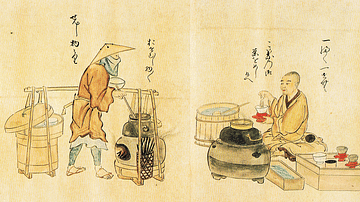
Image
17th-century Japanese Tea Vendors
A print showing Japanese tea vendors. Edo Period, c. 1846, print from a 1632 original. Copied by Kanō Osanobu and Kanō Masanobu. (From Poetry Competition of Artisans, vol.2)

Image
Chanoyu - Japanese Tea Ceremony
The essential implements of the chanoyu or Japanese tea ceremony.

Image
Japanese Matcha Green Tea
Matcha, the powdered green tea used in the traditional Japanese tea ceremony.
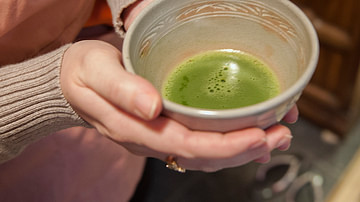
Image
Japanese Green Tea
A bowl of whisked green tea (matcha), typical of the traditional Japanese tea ceremony.

Image
Ancient Korean or Japanese Jar
This jar was excavated from a box-style stone coffin in Daishogunyama Tumulus on Tsushima, the Japanese island closest to the Korean peninsula. Its round body was created by lightly beating the outer surface of the bottom part with a beating...
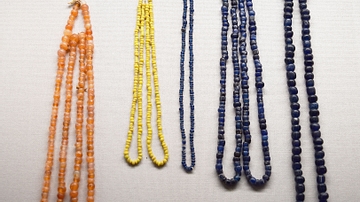
Image
Japanese Beads from the Kofun Period
These beads come from Japan and date from the Kofun period (250-538 CE) in Japanese history. In the Kofun Period beads of various shapes and materials were worn as fashion accessories, used in rituals, and buried in tombs. They include, for...
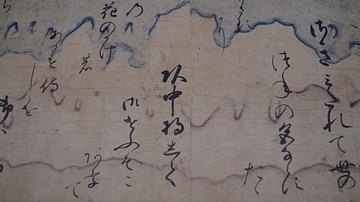
Image
Japanese Calligraphy
An example of Japanese calligraphy. From a scroll with extracts from the 'Tale of the Genji' or Genji Monogatari, written in the 11th century CE by Murasaki Shikibu. Ink on decorated paper. Attributed to Prince Son'en (1298-1356 CE). (Tokyo...
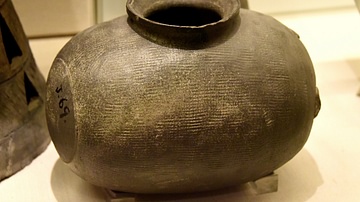
Image
Japanese Funerary Vessel
This Japanese funerary vessel is an example of Sue wares, originally made for tombs. They were probably used for feasting and drinking at the time of the funeral and then buried with the person who had died. They were crafted on a potter's...
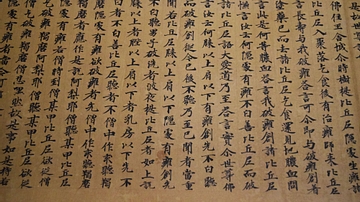
Image
Portion of a Japanese Monastic Code of Conduct
This is a selection from the "Gogatsu tsuitachi kyo" compilation, vol. 39, and it details the rules and regulations for monks in ancient Japan. It dates from 740 CE, which corresponds to the Nara period in Japanese history. It was made from...
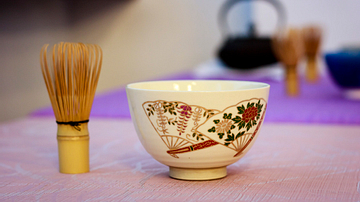
Image
Japanese Whisk & Tea Bowl
A traditional bamboo whisk (chasen) and bowl (chawan) used in the Japanese tea ceremony.